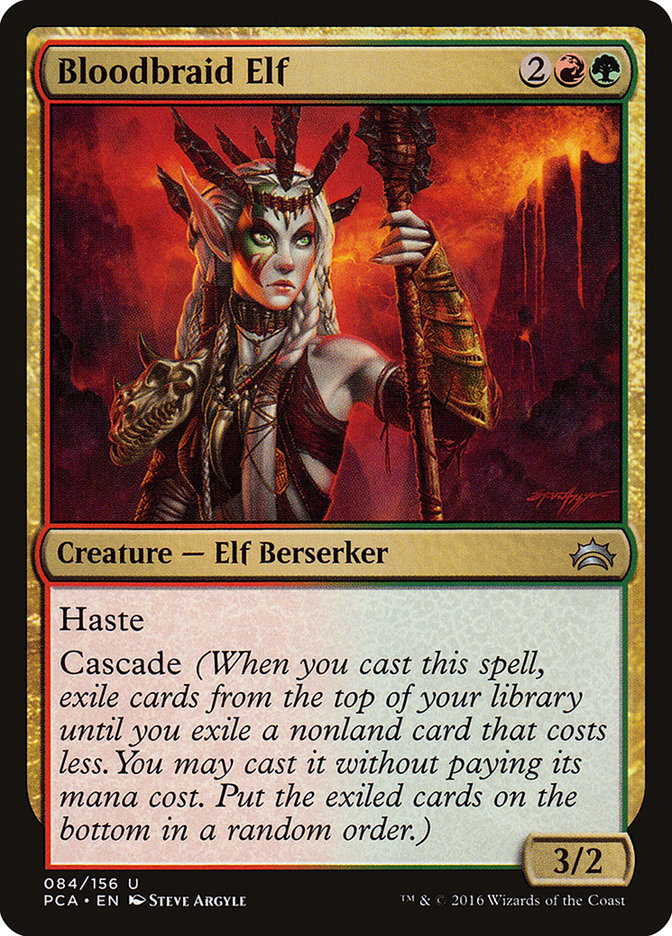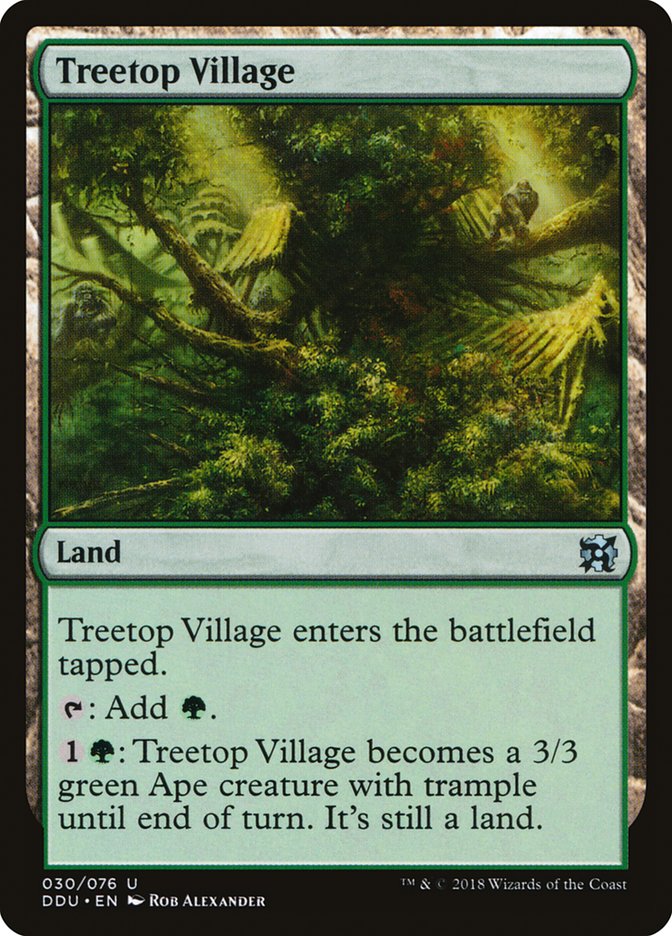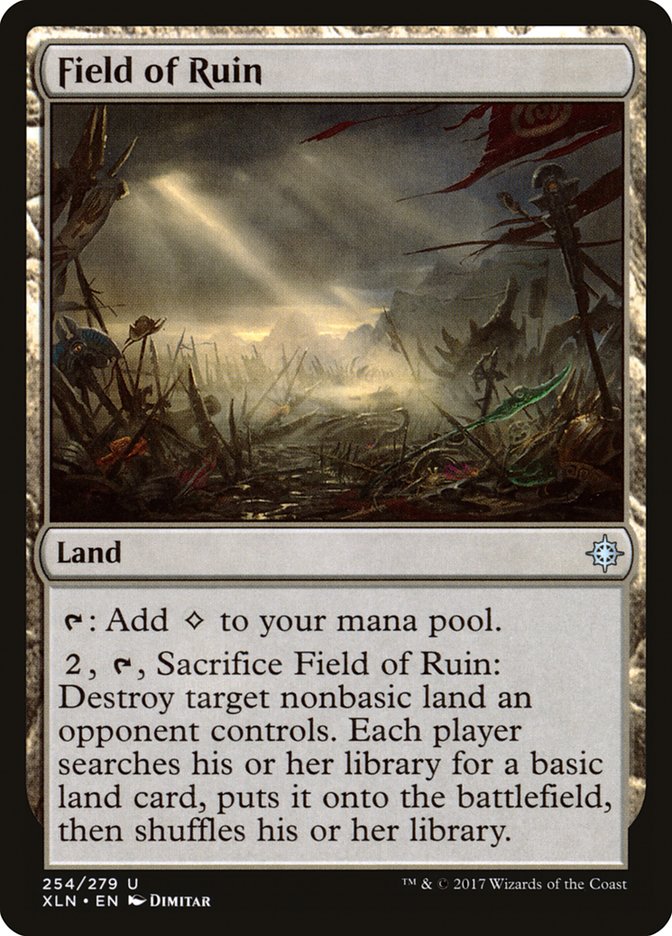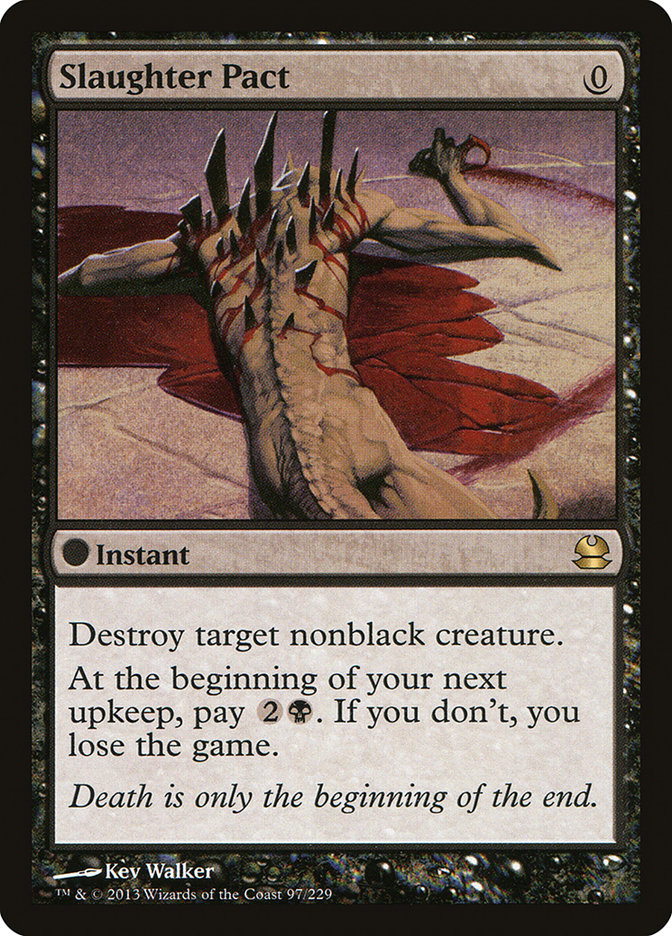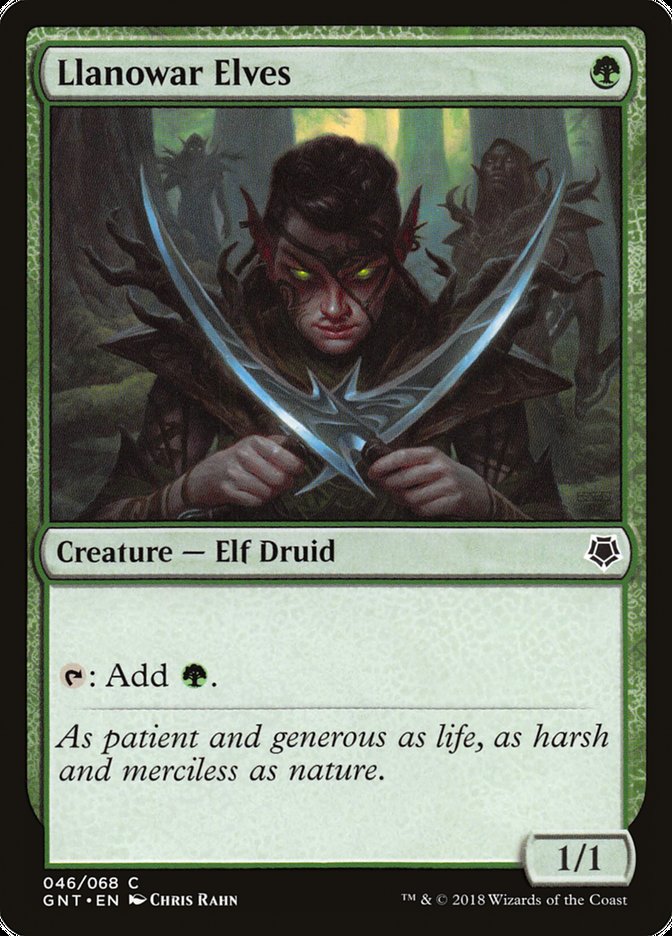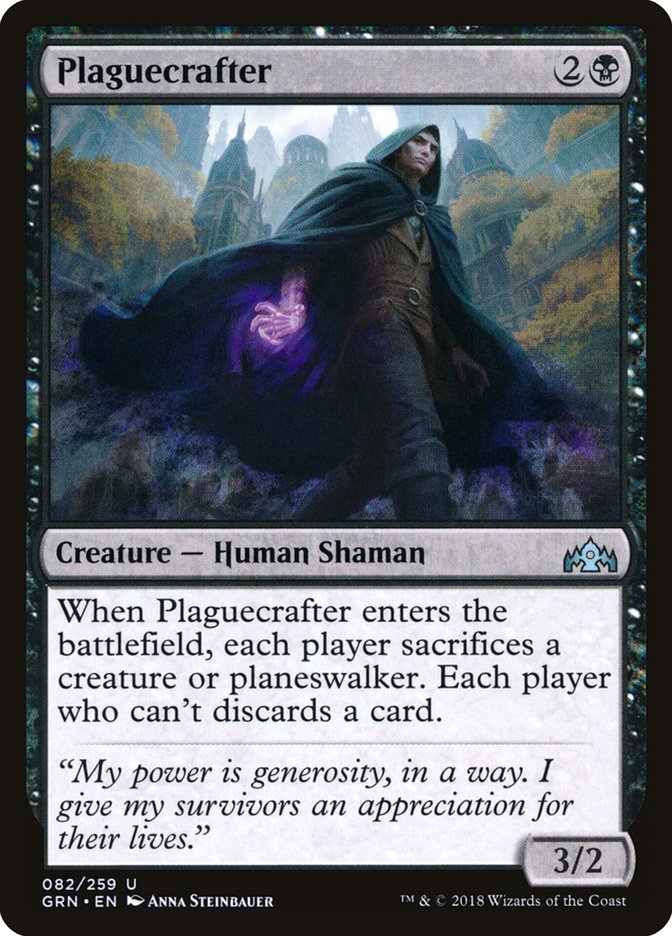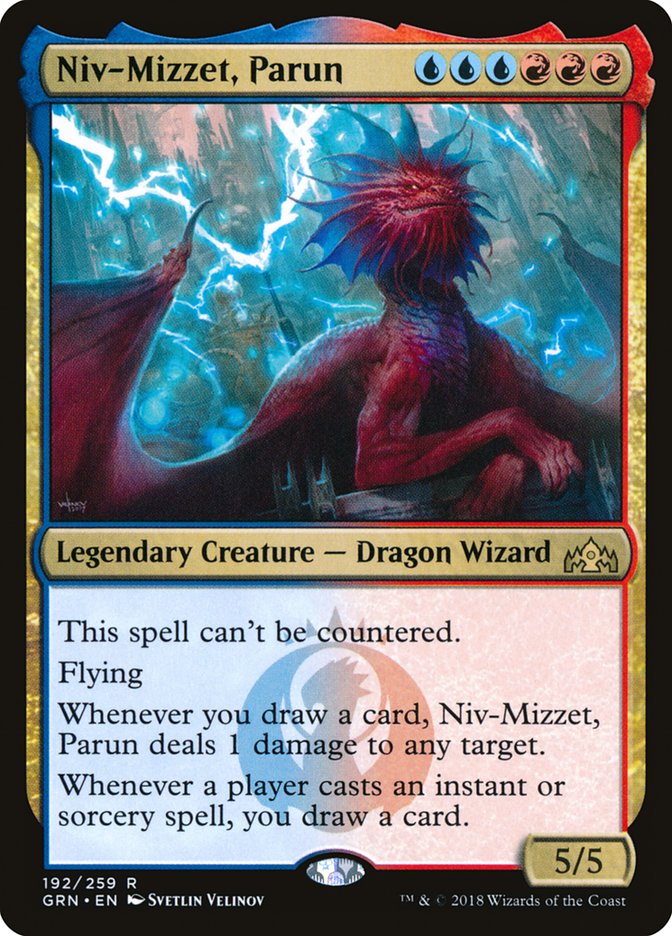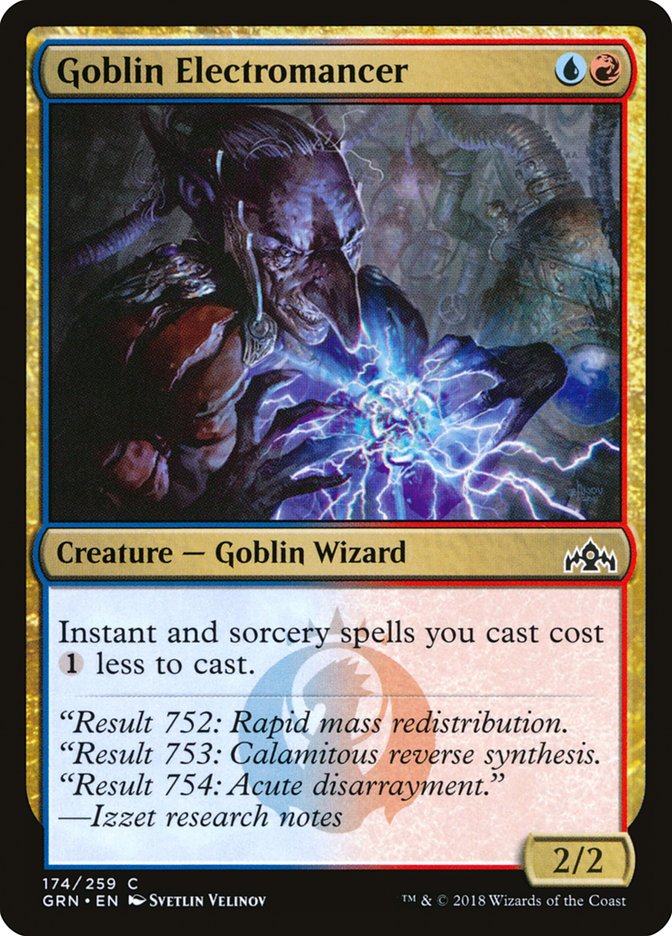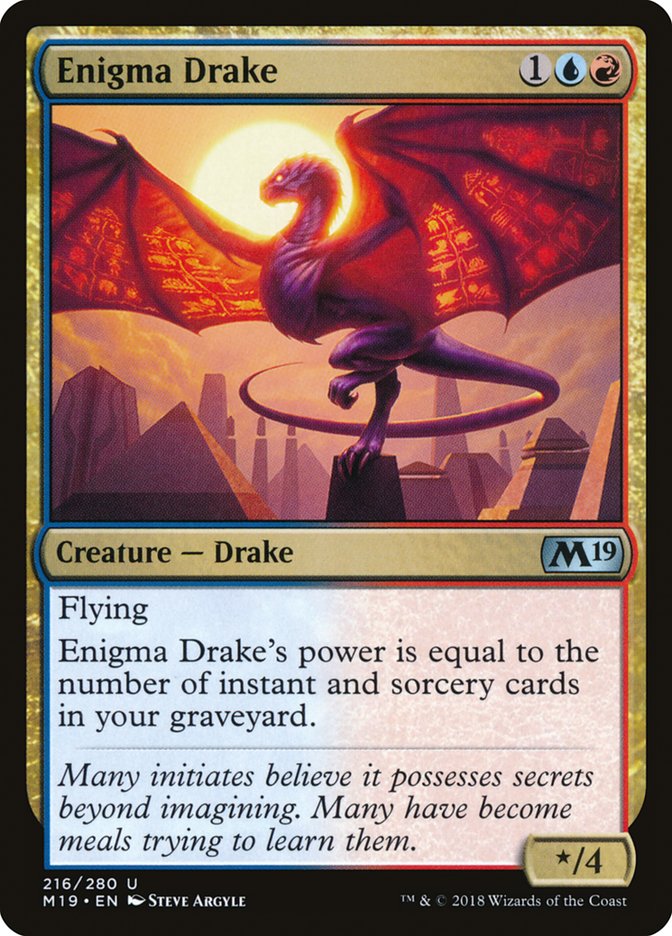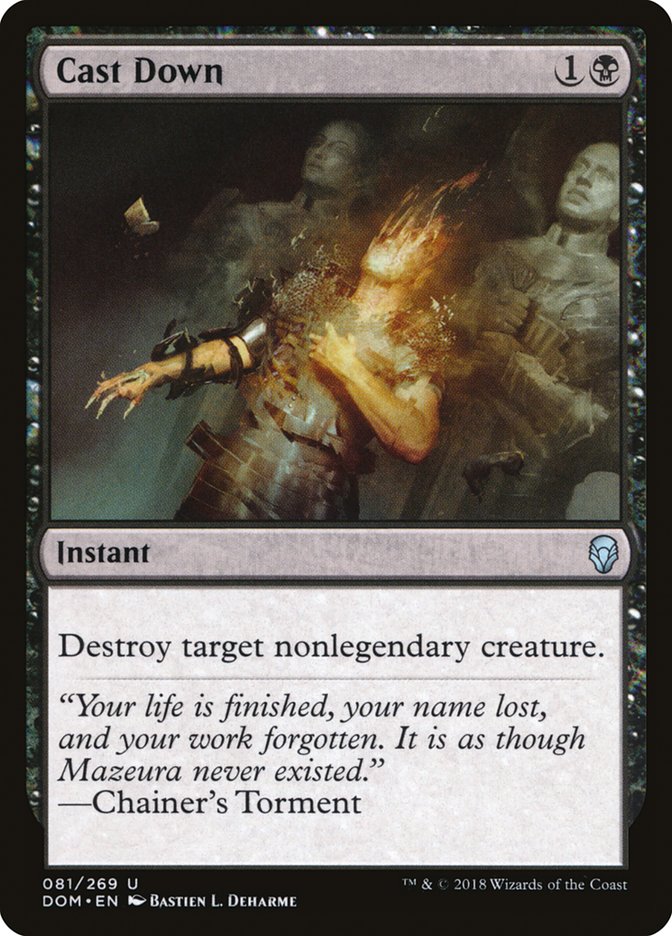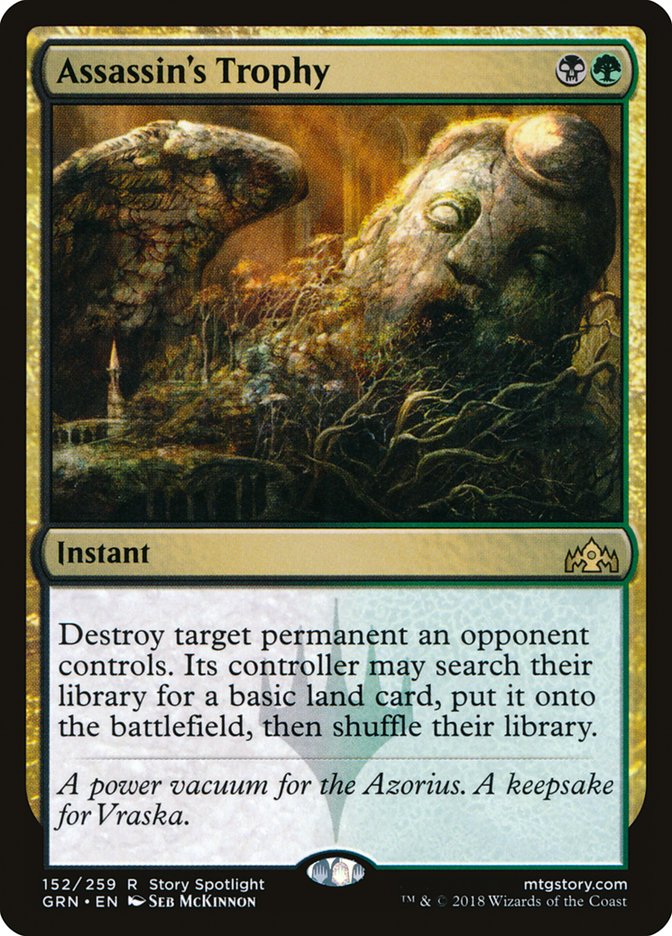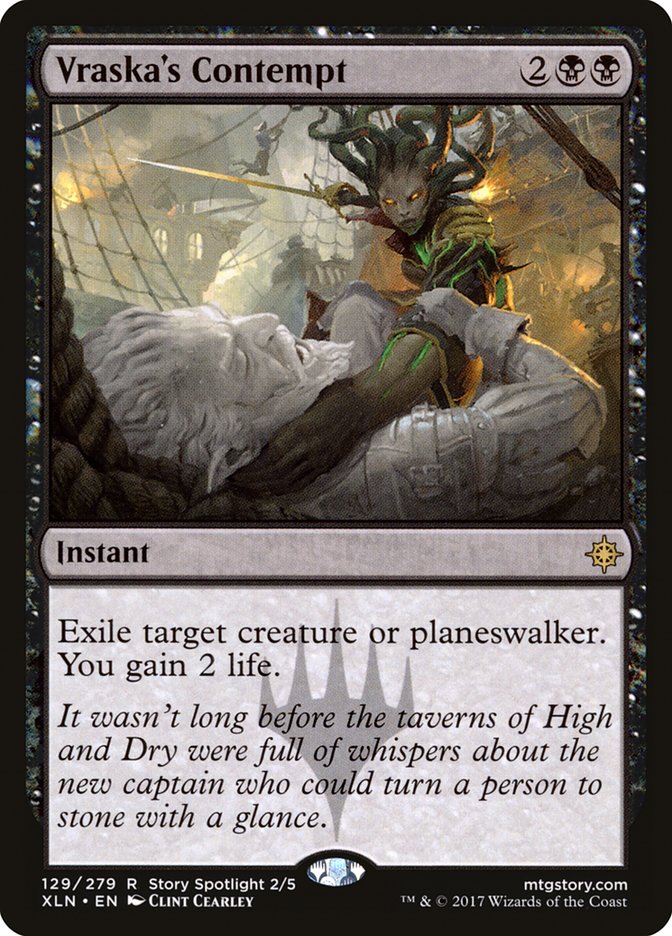Deciding on your decks for the #SCGINVI can be
rather stressful. There’s a lot on the line at the biggest tournament of
the year on the SCG Tour, and no one wants to be behind the field before
round one even begins. Luckily for me, I’ve sidestepped that stress this
time around and have known six of the 150 cards I’ll register for months.
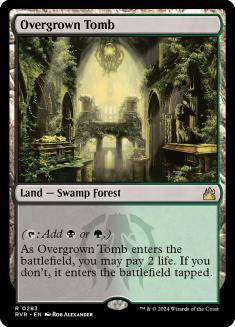






Look, I’m not saying it’s the best life, but it’s not a bad one and it’s
the only life for me. My heart these days beats to the siren’s call of
Overgrown Tomb. Getting to play with Overgrown Tomb in both Standard and
Modern in the same tournament is a rare treat, and not one that I’m willing
to give up.
If this is your lot in life too, here’s what I recommend.
Modern
Last weekend at #SCGBALT I played Jund to a 10-5 record and a Top 64
finish. Here’s the list I played:
Creatures (15)
Planeswalkers (4)
Lands (24)
Spells (17)

This list was good, and if I were forced to run it back without making any
changes I would still feel good about my chances at the #SCGINVI. Before
talking about why, I want to address the Karn in the corner:
I am now 6-0 in competitive REL matches v Tron
post-Trophy.Caught myself thinking “Thank God” when my
opponent led on an Urza’s Mine game one.I love this new
world.(5-1 at #SCGBALT)
—
Jadine Klomparens (@thequietfish) December
1, 2018
After my post-Assassin’s Trophy Top 8 with Jund at #SCGCHAR, I wrote in my
post-tournament
article
that the Tron matchup was legitimately fine now. I didn’t spend more than a
paragraph talking about that matchup, partly because I wasn’t confident
enough in my assessment of the matchup to be shouting it. Since then things
have changed, and it’s time for me to start shouting.
I believe that the builds of Jund I’ve been playing lately are small
favorites against Tron, somewhere in the 55% to 65% to win range.
Assassin’s Trophy is great and does a lot, but Trophy only gets Jund up to
even against Tron. The edge in the matchup I’ve been enjoying lately comes
from other shifts in the metagame:
Surgical Extraction is something we’re actively interested in playing right
now. Thanks to the rise of graveyard decks, that is a game-changer against
Tron. The two-card combo of Fulminator Mage plus Surgical Extraction
guarantees you a Tron-free game whenever you draw both, a plan which used
to be a desperation gambit for Jund in Tron-heavy metagames. Assassin’s
Trophy has greatly increased the efficacy of the combo by giving you tons
of redundancy on one half of the combo. Nowadays, every game you draw
Surgical Extraction you’re very likely to have drawn an Assassin’s Trophy
or a Fulminator Mage to go with it, making the card much more effective
than it used to be.
The old rebuttal to arguments like this is that Jund will just lose to
Thragtusks and Wurmcoil Engines cast the fair way, but that idea no longer
holds water, if it ever did. Jund is more than capable of grinding through
a Wurmcoil Engine when the need arises. The real problem in the old days
was being unable to beat a Karn Liberated or an Ugin, the Spirit Dragon,
but Assassin’s Trophy does double duty and lets Jund cover the planeswalker
angle at the same time as everything else. But back to the Wurmcoil Engine
thing. Let’s not forget this unsung hero:
Kalitas, Traitor of Ghet is incredible right now. It takes a lot to get me to bench Bloodbraid Elf, but I played a two-two
split between Kalitas and Bloodbraid last weekend and don’t regret it one
bit. The stars have aligned in the Modern metagame right now such that
Kalitas is good in virtually every matchup.
In the Tron matchup, Kalitas puts the final nail in the coffin of their
Wurmcoil Engine plan. This might not sound like a huge deal, but I assure
you that it is. Wurmcoil Engine is legitimately what Tron is forced to rely
on when their manabase is under the level of attack that Jund can muster in
sideboard games, and having Kalitas to close the door on even that plan
really cements the whole matchup. It’s the combination of Assassin’s
Trophy, Surgical Extraction, Fulminator Mage, and Kalitas that makes me
believe Jund is currently favored against Tron.
But enough about Tron – no single deck is that important a piece
of the Modern metagame. Kalitas is also great against the creature decks,
Humans and Bant Spirits, by the simple virtue of being the Traitor of Ghet.
Creature decks are what Kalitas was printed to beat. The graveyard decks
right now utilize creatures as their payoffs, and Kalitas is great at
turning your removal spells into live cards against the likes of Prized
Amalgam and Arclight Phoenix. Kalitas is even good against the artifact
decks, letting you beat the Scrap Trawler value game that Ironworks likes
to play against you and turning off a sizable portion of the synergies in
the Hardened Scales deck.
There are a few decks where Kalitas doesn’t shine: the mirror, Grixis
Death’s Shadow, Jeskai Control, Storm, and Infect. Those five decks
together aren’t nearly enough of the metagame to get me off my maindeck
Kalitas kick, and I fully intend to register two copies at the #SCGINVI.
Indeed, I’m surer that I’m going to play Kalitas, Traitor of Ghet than
Lightning Bolt.
Creatures (14)
Planeswalkers (5)
Lands (24)
Spells (17)

My biggest problem with the idea of playing Golgari Midrange over Jund is
that I’ve never felt that the archetype had enough playable threats.
Tireless Tracker and Grim Flayer are just not good enough to register in my
book, and the deck just falls short on playables without them. If Kalitas
is well-positioned, getting to 75 cards becomes doable.
These are the big cards you lose by moving to Golgari Midrange. I don’t
consider Kolaghan’s Command to be much of a loss as the card is
surprisingly ineffective most of the time. Bloodbraid Elf is great and I’m
sad about not having access to it, but it’s worth noting that I did only
play two copies last weekend. Lightning Bolt is the big loss for me, as
having a removal spell that can also speed up my clock by a turn against
non-interactive decks is a big boon to Jund. Still, it might be worth it.
These are the big things you gain by switching to Golgari. Treetop Village
is an immense upgrade to Raging Ravine, letting you get value out of your
manabase without spending your entire turn on it. Trample also matters a
lot and is a big deal on your creature-land. The combination of Field of
Ruin and Assassin’s Trophy is legitimately powerful and gives you a sizable
edge in midrange mirrors. Fatal Push is remarkably well-positioned right
now, and the only knock I have against the card is that it’s not Lightning
Bolt, but very few things are. It’s also worth noting that Golgari’s Fatal
Pushes are better than Jund’s thanks to Treetop Village.
Golgari Midrange does lose some speed when compared to Jund, and there’s a
lot of climates where that would be a deal breaker for me. I don’t believe
that time is now. #SCGBALT showed that the fair decks had what it takes to
compete with Modern’s non-interactive nonsense, and I believe that playing
relatively fair will be on the rise next weekend. That’s good news for
Golgari Midrange.
At the same time, it must be said that Golgari’s sideboard is much worse
than Jund’s. That makes sense – Golgari has access to one less color of
cards and decreased options leads to decreased quality. This isn’t a big
deal if you nail the metagame when building your list, but if you miss by a
little your sideboard cards are unlikely to be good enough to carry you
anyway.
All in all, I’m torn on what to play. I ultimately don’t think the
difference between the two decks is very large, and if you have a strong
leaning towards one or the other, I think that is absolutely the deck you
should play this weekend.
Final point: Slaughter Pact. I played Slaughter Pact last weekend and it
was fine for me. Pact is old-school Jund tech to give you a removal spell
that you can play on turn 4 alongside Kalitas and get a Zombie token
immediately before your opponent has a chance to answer the Kalitas.
Slaughter Pact became strictly unplayable when Death’s Shadow was a top
deck in the format, but those days are over, and I didn’t expect there to
be any Death’s Shadows cast against me last weekend. Then Death’s Shadow
went and did well despite my expectations, so I won’t be playing Slaughter
Pact going forward.
Standard
Enough of this Modern talk. Let’s switch over to the format where you get
to play twice as many Overgrown Tombs and have 100% less people tell you
that your deck is an awful choice.
Creatures (25)
- 4 Llanowar Elves
- 2 Carnage Tyrant
- 4 Wildgrowth Walker
- 4 Merfolk Branchwalker
- 1 Seekers' Squire
- 4 Jadelight Ranger
- 2 Ravenous Chupacabra
- 2 Midnight Reaper
- 2 Plaguecrafter
Planeswalkers (3)
Lands (24)
Spells (8)

This is the list that Emma Handy played in the Standard Classic last
weekend to a ninth place on tiebreakers finish and is approximately the
list I intend to play at the Invitational. Here’s what matters:
I’ve finally caved and admitted Llanowar Elves is something we should be
playing. I didn’t play it at the Pro Tour, and I don’t regret that, but the
way the format has developed since the Pro Tour has me convinced that
Llanowar Elves is no longer a debate.
It’s not that Llanowar Elves is just wildly good against any specific deck
that is more popular since the Pro Tour, it’s that every deck in the format
is just much more tuned and refined nowadays. Llanowar Elves is the kind of
card that adds raw power to your deck and lets you keep up with decks that
are doing powerful things quickly.
But very few people besides me ever needed convincing that Llanowar Elves
was the truth, so I won’t waste time and words convincing you of something
you already believe. Let’s move on.
If there’s one big thing you take away from the Standard portion of this
article, it should be that Plaguecrafter has circled back around to being
great. I loved Plaguecrafter at the beginning of the format, but after
Golgari Midrange became the most popular deck, Plaguecrafter got much
worse. The mirror tends to feature heavily populated battlefields, and
Plaguecrafter is not good there. But these days, Golgari Midrange has
trended downward slightly in popularity, and at the same time the rest of
the format has moved in directions that Plaguecrafter is exceptional
against.
Niv-Mizzet, Parun is the big bad boss of Standard right now in the minds of
the people, and Plaguecrafter is the answer. Jeskai Control has moved
towards playing around seven creatures on top of their copies of Teferi,
Hero of Dominaria, and these are the kinds of threat numbers that
Plaguecrafter is best against. You’re very happy every time your
Plaguecrafter trades for Niv-Mizzet, Parun, Crackling Drake, or Teferi, and
that will happen basically every game you draw Plaguecrafter against Jeskai
these days. Even better, with Find it’s more likely to happen twice than it
is to happen once.
Against Jeskai, the one-mana discount when compared to Ravenous Chupacabra
and the flexibility to answer planeswalkers are both very important parts
of Plaguecrafter. No matter what threat they draw, Plaguecrafter answers
it. If you always sacrifice Plaguecrafter to itself, they can’t ignore it
and leave it on the battlefield to protect their second threat from Find,
and this combination becomes a threat with only five mana. Plaguecrafter
changes the nature of the Jeskai Control matchup.
Against Izzet Drakes, you win by being aggressive and by answering all
their creatures. Answering Electromancer on turn 3 as opposed to turn 4
will often be the difference between winning and losing the game. If
they’re on Enigma Drake instead, the same logic applies. The value of
Plaguecrafter goes down a lot once they get Arclight Phoenix on the
battlefield, but it’s good enough on turn 3 that it’s still a good card in
the matchup.
Plaguecrafter isn’t stellar against Boros Aggro or Mono-Red Aggro, but it’s
not atrocious either. It’s always going to trade down in mana, but it’s
always going to trade. Sometimes you can use it to stop their Legion’s
Landing from transforming on an early turn, sometimes it’s just a little
less damage they get to present. These matchups are far from a reason to
play the card, but neither are they bad enough for it that you should
eliminate the card from consideration.
Finally, Plaguecrafter may not be good in the Golgari mirror, but it does
limit your opponent’s options. Once they know you play Plaguecrafter, they
must play in a way that doesn’t expose their planeswalkers or Carnage
Tyrants to Plaguecrafter. This means letting damage get through rather than
trade; this means not following up their Carnage Tyrant with a Finality to
clear the battlefield. Plaguecrafter only shines if your opponent makes a
mistake, but you can get a sizable advantage out of how playing it
restricts their play, and I think that advantage often is more important
than how lackluster it ends up looking when cast.
The last major point of contention in Golgari Midrange lists right now is
what the removal suite should look like. Now that Tocatl Honor Guard is a
format mainstay, the number of removal spells in the Golgari maindeck has
uniformly raised to five or six from the two or three that lists were
playing circa the Pro Tour. At the same time, Assassin’s Trophy has fallen
out of favor and is being replaced by main deck Cast Downs in a lot of
lists.
Vraska’s Contempt is rather popular right now, and I’m not a fan. Double
black and four mana are both huge strikes against the card. If Rekindling
Phoenix is popular, I think Vraska’s Contempt is a necessary evil, but it’s
not right now and that makes me want to just lean on Plaguecrafter and
Assassin’s Trophy to answer planeswalkers. Golgari Midrange is forced to be
the aggressive deck in a wide host of matchups these days, and its aggro
game is hurt a lot by playing a removal spell that demands its whole turn
to cast.
At the same time, I like Cast Down a lot. The only deck that Cast Down is
actively bad against right now is Jeskai Control, and even that matchup has
times where killing a Crackling Drake changes the face of the game. Cast
Down is nominally bad in the mirror, but now that Wildgrowth Walker is the
order of the hour there are creatures in the mirror that have to be killed
that Cast Down can answer. Further, Cast Down being only two mana means you
can use it to get aggressive and put your opponent on the back foot, which
is one of the best ways to steal games in the matchup. And against the rest
of the field, Cast Down is one of your best cards.
As for quantity, I think four or five removal spells is the right number.
You need to answer Tocatl Honor Guard, and that means three removal spells
just isn’t enough. You want to play as few as you can get away with though,
as the power of Golgari Midrange is in its threats, not its answers. It
plays a lot of medium-minus creatures, but when you play a lot of them,
they become medium-plus.
In the end, I’m very excited to be on team Overgrown Tomb for the
Invitational. It’s hard to imagine that registering six Overgrown Tombs in
a tournament will ever be this good again.




